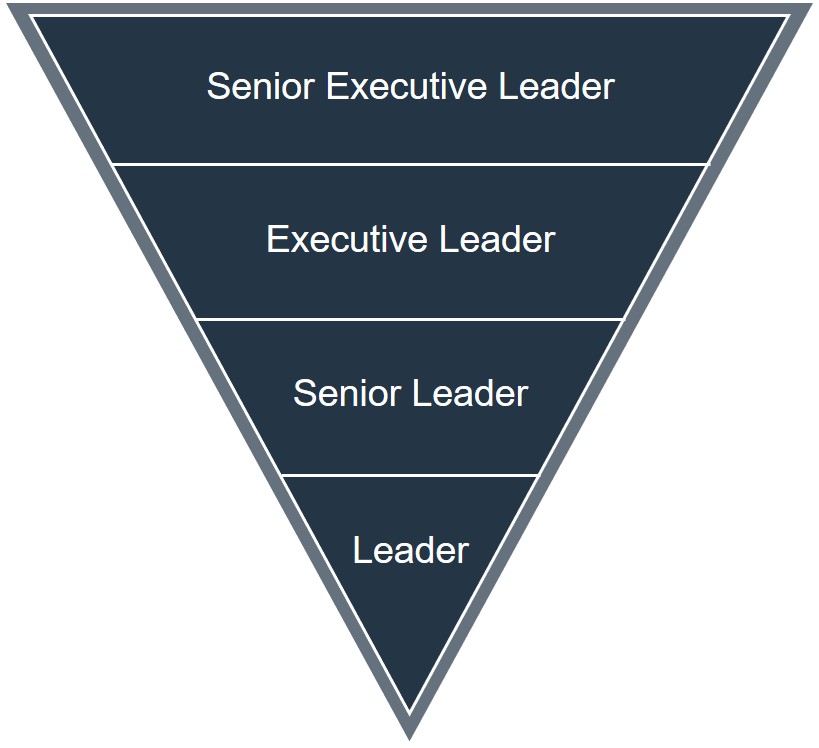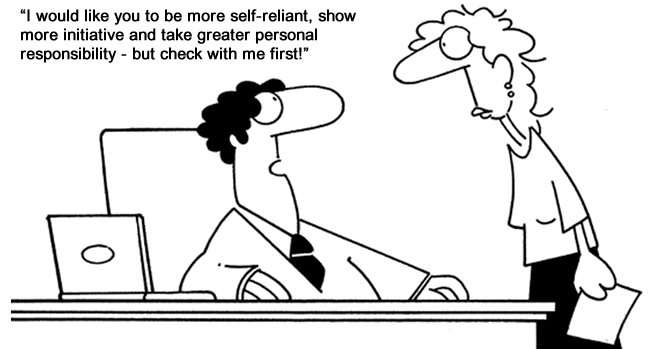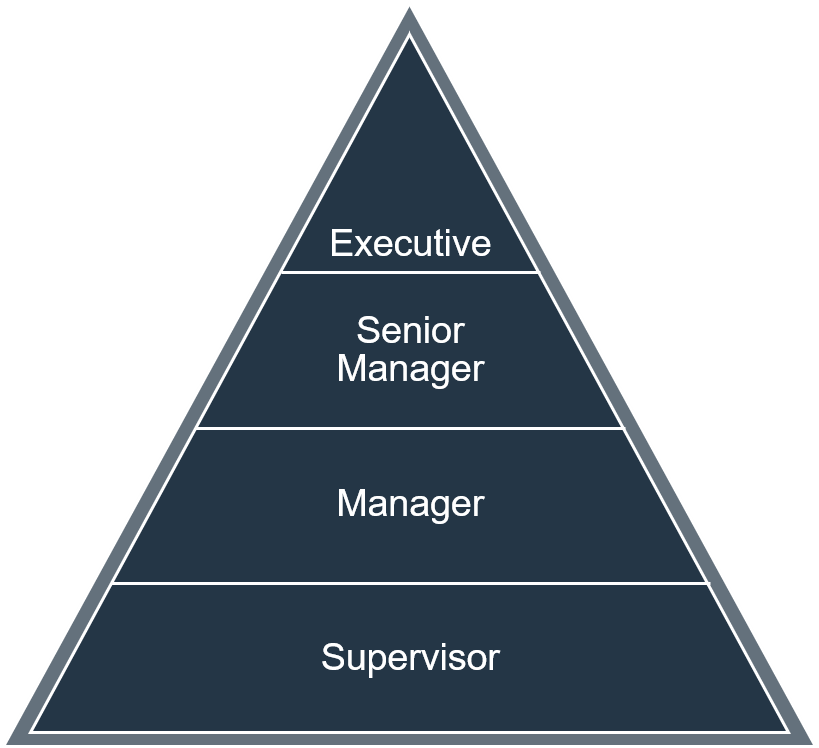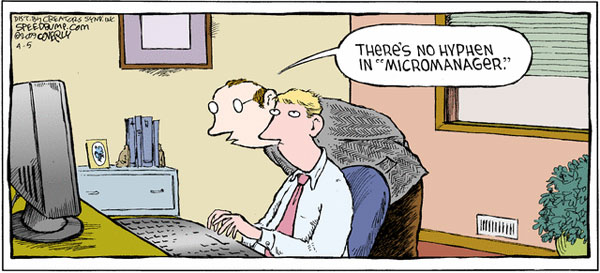High-performing organizations understand that effective leadership is critical for success. Yes – management happens every day. Leadership is more important. John Maxwell, a leadership guru, likes to say, “everything rises and falls on leadership.” Last week I described the corporate culture created when an organization focuses on management more than leadership. I called this organization viewpoint the Common Management Model. This week I will provide a different view. I call it the Uncommon Leadership Model.

Leadership is emphasized – you see it and hear it
The first thing to notice about the Uncommon Leadership Model is the structure. It is not the classic pyramid that many organizations use to task organize. Rather it is an inverted pyramid. It turns the Common Management Model on its head. In an organization that thinks this way, leaders talk about their purpose – why their organization exists. Their mission statement is clear – what are they trying to do? You do not climb to the top of the ladder by managing more resources. Instead, you receive more leadership responsibility as your leadership abilities grow.
I am not afraid of an army of lions led by a sheep; I am afraid of an army of sheep led by a lion.
Alexander the Great
Leaders are expected to increase their impact over time
Leaders accomplish the mission and produce results. Their impact grows over time. As a leader’s ability grows so does her career. Below is a short description of the levels in the Uncommon Leadership Level starting from the bottom. Please note that the numbers included are representative – they will vary by organization. For example, in the military, the numbers are much larger. In a start-up company, the numbers will likely be less.
Levels in the Uncommon Leadership Model
- Leader – the first line of leadership. You are a team leader. Usually responsible for leading a team of 10 or fewer members. It is vital you learn the fundamentals of leadership before progressing to the next level.
- Senior Leader – the next level of leadership. You are a leader of leaders. Usually responsible for a team of teams (3-5 teams) that are led by leaders. Typical responsibility includes 30-50 people. It is important you understand how to lead via your leaders. Otherwise, you will struggle at this level and may drive the people who work for you crazy.
- Executive Leader – the first level of executive leadership. You are a leader of senior leaders (3 to 5 senior leaders). Your team includes many teams, multiple levels, and more complexity. Typical responsibility includes 100-150 people. Your ability to directly affect performance continues to diminish. At this level, you must be able to lead your senior leaders effectively.
- Senior Executive Leader – the next level of executive leadership. At this point, you are a leader of executive leaders (3 to 5 executive leaders). Your team is big – many levels, many leaders, many teams. Typical responsibility includes 300-500 or more people. At this point in your career, you have reached rarified air and face huge expectations. You must be able to effectively lead executive leaders.
- The top of the pyramid. Some organizations offer higher levels of leadership with even more responsibility. I will not include any more levels. I do not feel qualified to help leaders at these levels. If you achieve this level and need help – hire an executive coach. It is worth the investment.
The focus is on producing better results
In the Uncommon Leadership Model results matter more than resources. Your value in the organization is not measured by how many resources you have, but by the results you deliver. As a leader, you may be asked to do more with less. Greater responsibility may not equate to more resources. More management may not work in this model. Leaders focus on making things happen, not just keeping the trains running. An organization that follows this model is never satisfied with the status quo. Leaders are always looking for a better way.

The uncommon leadership model cultivates a healthy culture
Helping others grow is important. If you are going to succeed as a senior leader it is important that you help your leaders become more effective. You are incentivized to make them successful, not just yourself. The same is true for executive and senior executive leaders. You help yourself by helping others grow. High performers tend to thrive in this type of organization. They enjoy the constant challenge to produce better results. This focus on leadership can create a healthy culture distinguished by three characteristics.
1. Collaboration is expected in the uncommon Leadership Model
Working together across the organization is the norm. An effective leader knows when to seek help from others. Rather than limit the ideas to her own team the leader will collaborate with others and identify the best approach to accomplish the mission. I saw this characteristic firsthand when serving in the military. We worked with rival units, other branches, various services, and even different countries to accomplish the mission. The best example comes from my time spent in Bosnia. The Russians were even part of our team. Their relationships with the Serbs were critical for making the peacekeeping operations successful. Bosnia would not be where it is today as a nation without the help of the Russians, and many other countries.

2. Innovation is promoted
Effective leaders understand that innovation is critical for survival in today’s hyper-competitive business environment. If you fail to innovate your company may not exist in the future. Think of all the companies that failed to innovate and are no longer here. Amazon continues to crush competitors through innovation. In the Uncommon Leadership Model leaders always look for a better way to accomplish the mission. After action reviews are completed to identify best practices (approaches that work), and lessons learned (things that went wrong). The organization learns from its mistakes and identifies new approaches to avoid repeated mistakes.

3. Empowerment is encouraged in the Uncommon Leadership Model
No one allows micromanagement. Good leaders empower their people without telling them what to do all the time. Seasoned senior leaders trust their leaders. They train their leaders so that they need minimum supervision. Good executive leaders assign responsibility to their senior leaders so that they feel empowered to make it happen. Great senior executive leaders delegate the appropriate level of decision-making authority to their leaders so that they do not require unnecessary oversight.

The Uncommon Leadership Model is the better way
All the Way Leadership! believes that the Uncommon Leadership Model is the better way to run your organization. Next week I will explain in more detail why. Strive to be different, to be better. You can do it, and we are here to help you make it happen.
ATW! will make you a better leader
I hope you join me on this journey to raise the next generation of leaders. The world is in desperate need of more great leaders. Women and men who lead with confidence, clarity, and creativity. It’s time to become the leader that your world needs. Let’s go All The Way!








